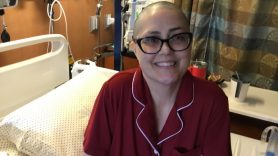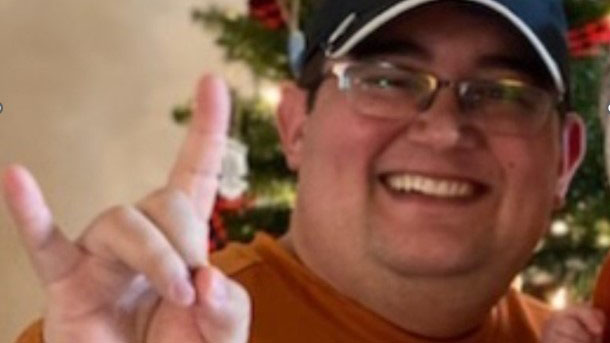- Diseases
- Acoustic Neuroma (14)
- Adrenal Gland Tumor (24)
- Anal Cancer (68)
- Anemia (2)
- Appendix Cancer (16)
- Bile Duct Cancer (26)
- Bladder Cancer (72)
- Brain Metastases (28)
- Brain Tumor (232)
- Breast Cancer (714)
- Breast Implant-Associated Anaplastic Large Cell Lymphoma (2)
- Cancer of Unknown Primary (4)
- Carcinoid Tumor (8)
- Cervical Cancer (158)
- Colon Cancer (166)
- Colorectal Cancer (116)
- Endocrine Tumor (4)
- Esophageal Cancer (44)
- Eye Cancer (36)
- Fallopian Tube Cancer (8)
- Germ Cell Tumor (4)
- Gestational Trophoblastic Disease (2)
- Head and Neck Cancer (12)
- Kidney Cancer (128)
- Leukemia (342)
- Liver Cancer (50)
- Lung Cancer (286)
- Lymphoma (278)
- Mesothelioma (14)
- Metastasis (30)
- Multiple Myeloma (100)
- Myelodysplastic Syndrome (60)
- Myeloproliferative Neoplasm (4)
- Neuroendocrine Tumors (16)
- Oral Cancer (100)
- Ovarian Cancer (172)
- Pancreatic Cancer (160)
- Parathyroid Disease (2)
- Penile Cancer (14)
- Pituitary Tumor (6)
- Prostate Cancer (146)
- Rectal Cancer (58)
- Renal Medullary Carcinoma (6)
- Salivary Gland Cancer (14)
- Sarcoma (238)
- Skin Cancer (296)
- Skull Base Tumors (56)
- Spinal Tumor (12)
- Stomach Cancer (64)
- Testicular Cancer (28)
- Throat Cancer (92)
- Thymoma (6)
- Thyroid Cancer (96)
- Tonsil Cancer (30)
- Uterine Cancer (80)
- Vaginal Cancer (16)
- Vulvar Cancer (20)
- Cancer Topic
- Adolescent and Young Adult Cancer Issues (20)
- Advance Care Planning (10)
- Biostatistics (2)
- Blood Donation (18)
- Bone Health (8)
- COVID-19 (362)
- Cancer Recurrence (120)
- Childhood Cancer Issues (120)
- Clinical Trials (630)
- Complementary Integrative Medicine (22)
- Cytogenetics (2)
- DNA Methylation (4)
- Diagnosis (232)
- Epigenetics (6)
- Fertility (62)
- Follow-up Guidelines (2)
- Health Disparities (14)
- Hereditary Cancer Syndromes (126)
- Immunology (18)
- Li-Fraumeni Syndrome (8)
- Mental Health (116)
- Molecular Diagnostics (8)
- Pain Management (62)
- Palliative Care (8)
- Pathology (10)
- Physical Therapy (18)
- Pregnancy (18)
- Prevention (914)
- Research (392)
- Second Opinion (74)
- Sexuality (16)
- Side Effects (604)
- Sleep Disorders (10)
- Stem Cell Transplantation Cellular Therapy (216)
- Support (402)
- Survivorship (320)
- Symptoms (182)
- Treatment (1786)
Multiple myeloma and spine cancer survivor: ‘Always think about a second opinion’
5 minute read | Published September 23, 2024
Medically Reviewed | Last reviewed by Claudio Tatsui, M.D., and Muzaffar Qazilbash, M.D., on September 23, 2024
In 2022, Emily Shults, then 47, had recently moved to Magnolia, Texas, from California, to be closer to family. During the move, she remembers dealing with bad back pain. Emily wasn’t too concerned. “I thought I’d tweaked something in the move,” she says.
But she went to a local doctor north of Houston to get checked out.
Back pain leads to cancer diagnosis
Blood work showed she was borderline anemic. She was referred to physical therapy. Emily recalls telling the physical therapist, “You’ll think I’m insane, but the pain is no longer in my shoulder; it’s in my lower back and radiating down into my leg.”
Throughout the autumn of 2022, her pain got worse. On a trip, the pain was so bad she had trouble sitting in a car. “I thought I was going to keel over!” she says. Emily’s legs felt numb as she stood up a few days later. As she started to fall, she put her arm out and then heard her arm snap. A call to 911 led her to the emergency room at a local hospital.
Emily had broken her arm. Scans revealed a lesion on her humerus, the large bone of the upper arm. But that wasn’t all: “My spine was caving in on itself because of lesions, and I had a lesion on my left pelvis and left rib,” recalls Emily.
She was diagnosed with multiple myeloma, a blood cancer that affects the bone marrow and weakens the bones. “The rug was pulled out from us,” Emily says. “I was like, ‘I have back pain! What do you mean, I have cancer?’”
Second opinion at MD Anderson changes treatment plan
Emily started radiation therapy at her local hospital, but she remained concerned that she needed more care. “Everyone said, ‘You need a myeloma specialist,” she recalls. “’ Go to MD Anderson.’”
She scheduled an appointment at MD Anderson.
But a week before her MD Anderson appointment, Emily’s legs felt heavy. Her doctor recommended she go to MD Anderson’s Acute Cancer Care Center right away. There, MD Anderson doctors found clots in her legs and a pulmonary embolism.
Emily spent a week in the hospital at MD Anderson while her care team developed a treatment plan. First, she would need chemotherapy. Her doctors recommended a combination medication, carfizomib lenalidomide dexamethasone (KRd), widely used for multiple myeloma. She also would receive daratumumab, a targeted therapy with monoclonal antibodies.
The goal was for Emily to have no minimal residual disease (MRD), meaning no trace of the disease could be found.
She met with Claudio Tatsui, M.D., a neurosurgeon who specializes in spine surgery, to explore options for treating the damage on her spine from the cancerous lesions. Tatsui felt she wasn’t stable enough for surgery yet, so she began physical therapy nearby.
Spinal surgery and stem cell transplant help multiple myeloma patient regain independence
A few months later, Emily had no minimal residual disease after successful chemotherapy. Her doctors felt she was ready for spinal stabilization surgery to help her walk and independently carry out daily activities again.
“It was very scary, but I think Dr. Tatsui and his team did everything they could to make me feel comfortable,” says Emily of the June 2023 surgery. “He was very thoughtful and careful.” Tatsui and his team explained every detail of the surgery as well as potential side effects. “They did everything they could to make sure I understood,” Emily says.
The surgery was a success. In addition, her MD Anderson doctors recommended a stem cell transplant, which replaces diseased bone marrow with healthy bone marrow cells.
Two months after her spine surgery, Emily had a stem cell transplant under the care of stem cell transplant specialist Muzaffar Qazilbash, M.D. “I went in the hospital using a walker, had surgery, and in July of 2023, I did my stem cell and went in with a rollator,” reflects Emily on her progress.
Today, Emily remains MRD-negative. Effectively, she is in remission. While she continues maintenance chemotherapy, she is back to walking and doing everything on her own. Her broken arm bone has also fully healed.
How does Emily feel about her time at MD Anderson? “Everyone has been really good about listening to me,” she says. “Every time I’ve had a challenge, they listen and connect me with specialists and rule things out.” For instance, a few months after her stem cell transplant, Emily had fluid buildup in her lower legs and feet. It was edema. This condition can occur in multiple myeloma patients after a stem cell transplant due to the cumulative effects of chemotherapy, white blood cell growth factors, and nutrition changes. “My legs felt like cement blocks,” Emily recalls.
Her care team responded immediately, putting her on a medication called furosemide twice a day and giving her a referral for therapy near her home. “Patients with severe edema can benefit by getting care at a lymphedema clinic or center,” says Qazilbash. “It is fully reversible in almost all cases.”
Emily’s team also ordered compression stockings for her. Today, the swelling is much more manageable.
Staying positive and engaged in care
Reflecting on her diagnosis and surgery, Emily says, “I allowed myself those days to cry, but focusing on the positive was a big driver for me.” Even on her worst days, she’d look for the positive. “As we’d see the doctors and nurses, they said, ‘You have a bright light,’” she recalls.
Being an active participant in her treatment and recovery helped Emily cope and heal. “Stay focused on the prize, partner with your team and figure out how to get through the setbacks,” she tells other patients.
Asking questions helped Emily feel empowered during her treatment, and she encourages other patients to do the same: “Make sure you are your own advocate; ask questions because that gives you peace of mind,” says Emily, who uses MyChart for questions between appointments. “If I can’t talk to the doctor on the phone, someone on their team is responding.”
Staying connected to loved ones also helped Emily and her family throughout her treatment. Her husband used social media to keep friends and family updated. “It’s hard on your caregivers; he needed an outlet,” she says.
Reflecting on her journey, Emily offers one last suggestion for other patients. “Always think about a second opinion. And don’t be afraid to say you need help or support.”
Request an appointment at MD Anderson online or call 1-855-635-2949.
Related Cancerwise Stories

Ask questions because that gives you peace of mind.
Emily Shults
Survivor





